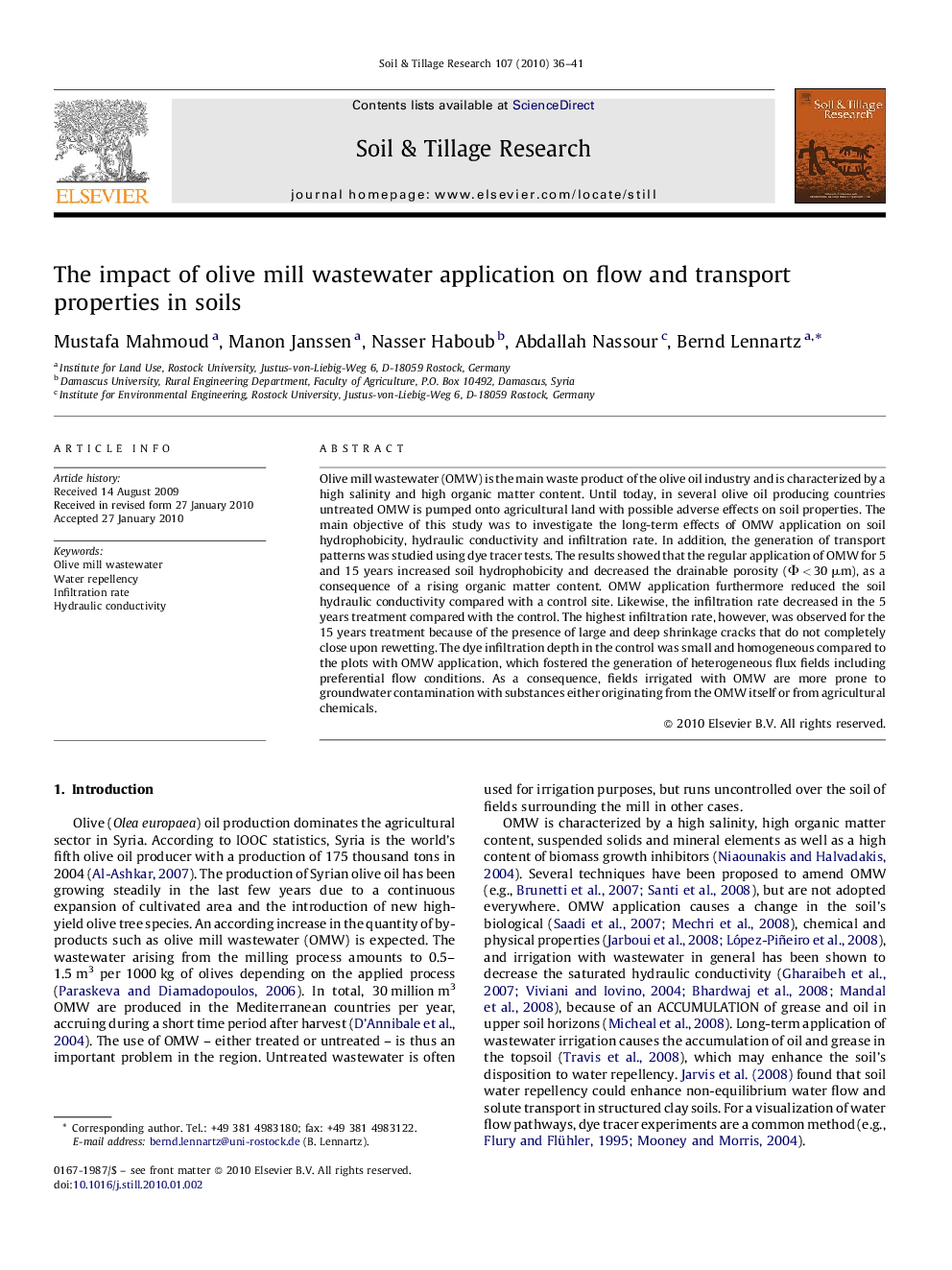| Article ID | Journal | Published Year | Pages | File Type |
|---|---|---|---|---|
| 306201 | Soil and Tillage Research | 2010 | 6 Pages |
Olive mill wastewater (OMW) is the main waste product of the olive oil industry and is characterized by a high salinity and high organic matter content. Until today, in several olive oil producing countries untreated OMW is pumped onto agricultural land with possible adverse effects on soil properties. The main objective of this study was to investigate the long-term effects of OMW application on soil hydrophobicity, hydraulic conductivity and infiltration rate. In addition, the generation of transport patterns was studied using dye tracer tests. The results showed that the regular application of OMW for 5 and 15 years increased soil hydrophobicity and decreased the drainable porosity (Φ < 30 μm), as a consequence of a rising organic matter content. OMW application furthermore reduced the soil hydraulic conductivity compared with a control site. Likewise, the infiltration rate decreased in the 5 years treatment compared with the control. The highest infiltration rate, however, was observed for the 15 years treatment because of the presence of large and deep shrinkage cracks that do not completely close upon rewetting. The dye infiltration depth in the control was small and homogeneous compared to the plots with OMW application, which fostered the generation of heterogeneous flux fields including preferential flow conditions. As a consequence, fields irrigated with OMW are more prone to groundwater contamination with substances either originating from the OMW itself or from agricultural chemicals.
